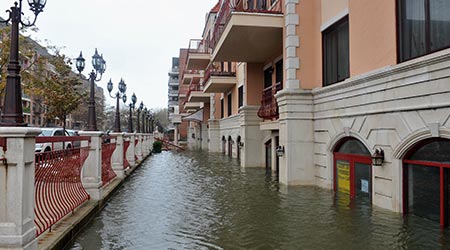
Building Resilience and Climate Change
September 18, 2018
Facility managers for years have been involved in discussions of climate change and institutional and commercial buildings and, in particular, facilities’ efforts to reduce greenhouse gas emissions. But in recent years, the effects of climate change are showing up in the form of more frequent, intense storms, and other climate-related hazards.
Such developments reinforce the need for managers to pay greater attention to resilience — the ability of buildings to withstand and recover from emergencies.
Many states prepare climate assessments that gauge the impact of climate change on numerous sectors, such as the economy, transportation and agriculture. But none of these reports have examined the way climate change will impact buildings — the places in which people spend more than 90 percent of their time.
New York has become the first state to do so, according to Niagara Frontier Publications. A three-year effort between the University at Buffalo and the New York State Energy Research and Development Authority (NYSERDA) has resulted in three reports: a climate hazards profile; regional costs of climate-related hazards for the state's building sector; and a set of climate resilience strategies for buildings.
"The vast majority of our building stock has already been built. So thinking about how to rehabilitate or retrofit existing buildings is really important going forward," says Nicholas Rajkovich, an assistant professor of architecture in the University of Buffalo’s School of Architecture and Planning and the principal investigator on the project. "Making sure our buildings are prepared and more resilient to future climate impacts is also very cost effective."
This Quick Read was submitted by Dan Hounsell — dan.hounsell@tradepressmedia.com — editor-in-chief of Facility Maintenance Decisions, and chief editor of Facilitiesnet.com.
Next
Read next on FacilitiesNet












